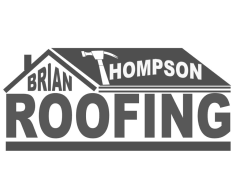Insurance Claims
Determine if a Claim is warranted: Unless you have been hit with a catastrophic hail or wind storm you should have a qualified contractor, such as Brian Thompson Roofing, LLC, inspect your roof prior to making a claim to determine if there is enough damage to warrant making a claim. Many roofing companies will tell you there is damage and that you should file a claim without ever having inspected the roof, in hopes that an adjuster will agree to replace it. In many cases the damage can be repaired for less than your deductible and with most insurance companies once you have filed a claim it goes on your record even if the insurance company doesn’t pay a penny. With some Insurance companies if you have 2 or 3 claims in a 1 to 3 year period they will cancel your insurance. Brian Thompson Roofing always looks at your property as if it is our own. If we wouldn’t file a claim, we don’t recommend that you file one. We will support all our assessments with photos.
If a claim is Warranted, Brian Thompson Roofing, LLC is familiar with all facets of insurance claims and will walk you through the entire process.
- Only the insured parties can call to file the claim. Make sure you have your policy number handy when you call.
- The insurance company will assign an adjuster who will then call to set an appointment with you to inspect your property. Please forward your Brian Thompson Roofing representative’s name and contact information to the insurance adjuster. (See ‘Meeting with your adjuster’ section below.)
- The adjuster will either give you an estimate immediately or send it in the mail with your 1st check. We will go over these documents with you so you have a good understanding of what they mean.
- If your adjuster assessed less damage than what we believe they should have we will walk you through the arbitration or appraisal process.
- Upon completion of repairs we will invoice your insurance company for you so they will generate your final check.
Meeting with your Adjuster. When the adjuster calls to make an appointment be sure to get his/her name, phone number, and claim number. We prefer to meet with your adjuster to make sure that all items such as paint work, window damage, siding damage, etc. are included in the original estimate. It is much easier to help your adjuster formulate his/her opinion and get all items included up front than it is to get him/her to change their opinion after the initial inspection. It is also difficult to get your insurance company to schedule a re-inspection if items are omitted.
Understanding the Paperwork. Once a claim has been approved most insurance companies will calculate what they will allow for replacement cost value (RCV), depreciation (DEP), and actual cash value (ACV). They will pay the ACV amount up front less your deductible and hold back the depreciation until the work is completed. Once a final invoice is submitted they will release the balance up to the RCV less your deductible. If a home owner submits an estimate for less than the RCV allowed by the adjuster, that lesser amount becomes the RCV. Depreciation equals the used portion of your shingle’s life expectancy. If a 30 year roof has been in service for 15 years they will depreciate the replacement cost value by 50%.New Paragraph
Your first check:
Suppose the replacement cost value (RCV) is $10,000.00
Your deductible is $1,000.00
In this scenario RCV would be reduced by DEP $ 5,000.00
Your first check would be $4,000.00
Your second check:
Upon completion we will send an invoice for $10,000.00
Your deductible is $1,000.00
Your first check was $4,000.00
Your insurance company will send you a final check for $5,000.0
